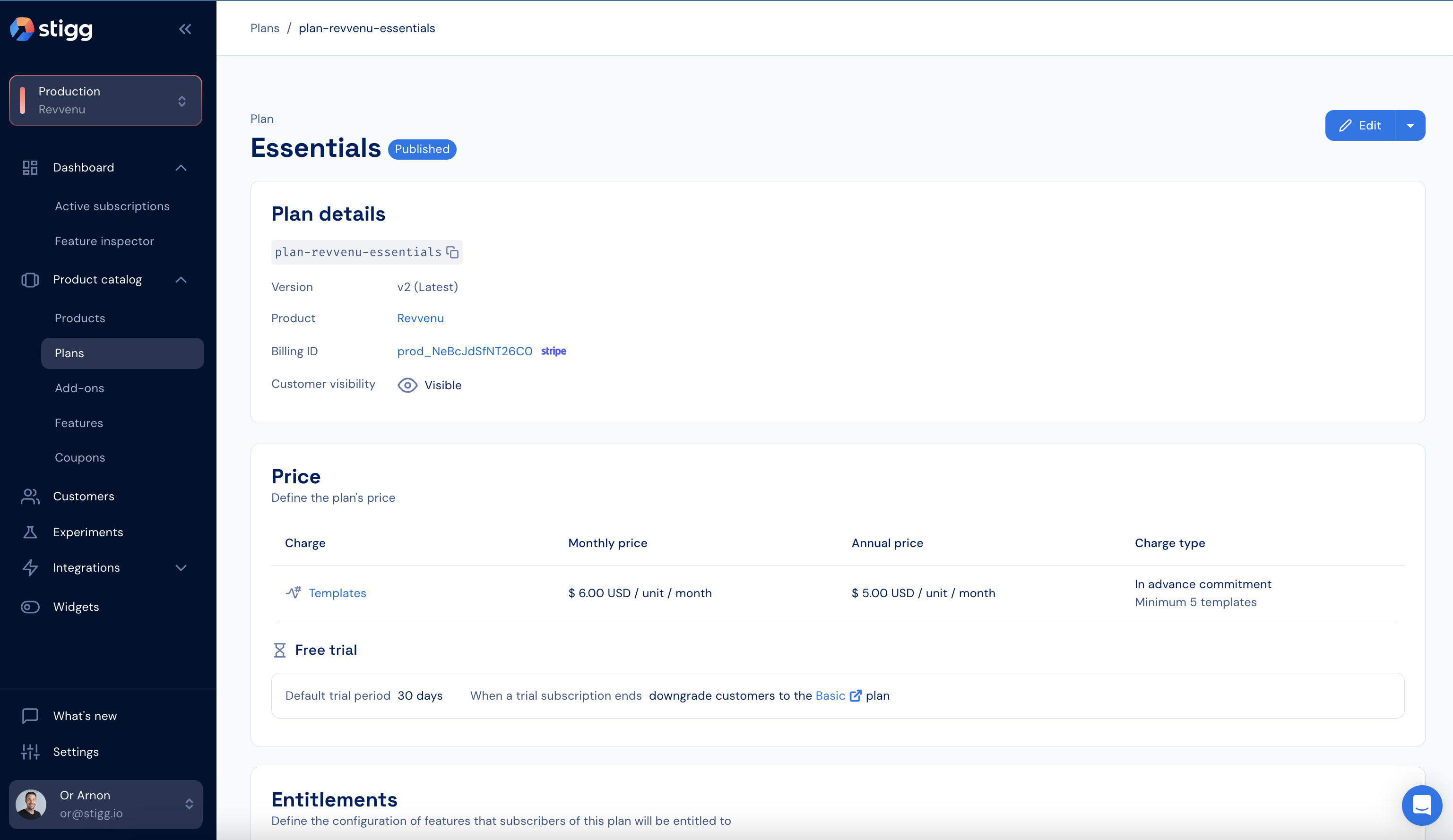
Plans
Overview
Plans define the set of product functionalities that customers are billed for over a specific billing period (for example, monthly or annually).
Stigg enables product managers and growth teams to create and manage plans, along with their content, pricing, and trial configurations, without the need for additional engineering effort.
The functionality included in each plan is determined by a combination of features and their configurations, collectively referred to in Stigg as entitlements.
Published plans are displayed to customers through pricing tables rendered using Stigg’s pricing table widgets and SDKs.


